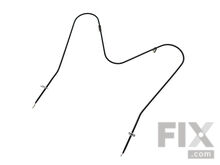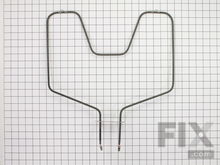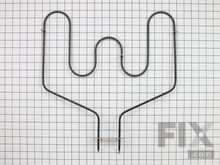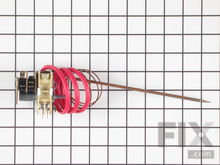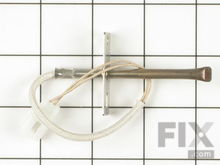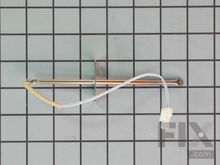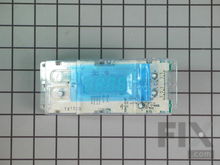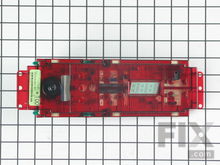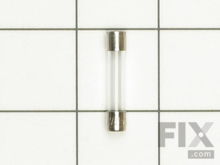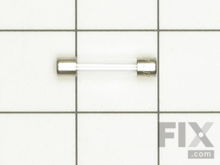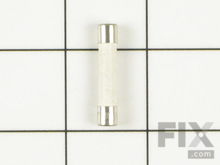How To Fix A Oven That Doesn't Heat When Baking
- Rated as EASY
- 1300 repair stories
- 5 step by step videos
Bake Element
At the floor of the oven is the heating element for baking. If your oven is electric, the baking element will likely be providing 90% of the heat for baking, and the broiler will provide the rest, so your food cooks evenly. If the oven isn’t heating up fast enough, never seems to get up to the right temperature, or if food is burning on the top and undercooked below, your bake element may be the culprit. First take a good look at the element itself to see if it is separated or blistered, in which case it would need replacing. But if it looks undamaged, try turning your oven on to bake for a minute before turning it off and carefully checking if the element’s gotten warm. If it is still cold, it’s time to unplug the stove, remove the back panel, and take a look at the wiring. Are the wires corroded or loose? Should you find broken wiring or terminals, or if the element itself looks burnt, you’ll need to replace that damaged part. Also check the bake element with a multi-meter for electrical continuity to see if the element needs replacing. The next layer of testing is a live voltage check of the bake circuit, and here you are entering the territory of the licensed electrician or repairperson – for safety’s sake. There may be a problem with the thermostat for the oven, the electronic element, or the fuse, if your oven has fuses.
Oven Control Thermostat
If your oven is running hot or cold, or if it is just not heating up at all, your problem could be a thermostat that isn’t working. The thermostat, part of the main control panel, regulates the broil and bake elements via temperature-sensitive contacts that send electricity to those elements. Since the thermostat’s rarely at fault for an oven that’s not getting up to temperature, check the other components before looking at the thermostat First, unplug the oven. Then use a multi-meter to check the contacts of the thermostat for continuity. If there’s an adjustment screw on the back of the thermostat, that means it can be re-calibrated using an accurate thermometer. Some thermostats allow you to move the calibration as much as 50 degrees F.
Temperature Sensor
It’s possible that the reason your oven is cold is a fault in the temperature sensor, which regulates oven temperature in modern ranges, like a thermostat. It’s located on the back wall of the inside of your oven, near the broiler on the top wall. On a newer oven, there may be a fault code displayed. Check your owner’s manual or the manufacturer website to find out the proper resistance of the temperature sensor, unplug the oven, and use a multi-meter to see if your sensor’s at the correct resistance.
Electronic Control Board
If you have a newer stove that’s not restaurant-style, it’s likely that the oven is controlled by an electronic control board. It functions like the brain of the stove, managing the broil and bake functions of an electric range as well as the oven safety valve of a gas one. When power’s not flowing to the circuits for the igniter or elements, the output relay needs to be checked at the control board – by a trained professional because of the risk of electric shock. That repairperson can help you determine whether the control needs replacement due to a lack of voltage output.
Fuses
With an oven that has internal fuses, a fuse can blow when there are problems with wiring or other components. First, unplug the range or oven, and then find the fuse that is blown. The fuses are usually labeled, so you can track down which circuit has a problem in its components and/or a short in its wiring that caused that particular fuse to blow. Don’t bother to change the fuse until you know the cause of the problem, and when you do change the fuse, make sure the new one is of the same rating as the original.
More Repair Parts
Still not sure which part is broken? We can offer you custom troubleshooting help if you search with your model number.





